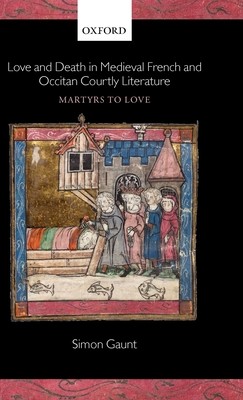
- We will send in 10–14 business days.
- Author: Simon Gaunt
- Publisher: Oxford University Press, USA
- ISBN-10: 0199272077
- ISBN-13: 9780199272075
- Format: 14.1 x 22.4 x 2.2 cm, hardcover
- Language: English
- SAVE -10% with code: EXTRA
Love and Death in Medieval French and Occitan Courtly Literature (e-book) (used book) | bookbook.eu
Reviews
Description
Some of medieval culture's most arresting images and stories inextricably associate love and death. Thus the troubadour Jaufre Rudel dies in the arms of the countess of Tripoli, having loved her from afar without ever having seen her. Or in Marie de France's Chevrefoil, Tristan and Iseult's fatal love is hauntingly symbolized by the fatally entwined honeysuckle and hazel. And who could forget the ethereal spectacle of the Damoisele of Escalot's body carried to Camelot on a supernatural funerary boat with a letter on her breast explaining how her unrequited love for Lancelot killed her? Medieval literature is fascinated with the idea that love may be a fatal affliction. Indeed, it is frequently suggested that true love requires sacrifice, that you must be ready to die for, from, and in love. Love, in other words, is represented, sometimes explicitly, as a form of martyrdom, a notion that is repeatedly reinforced by courtly literature's borrowing of religious vocabulary and
imagery. The paradigm of the martyr to love has of course remained compelling in the early modern and modern period.
EXTRA 10 % discount with code: EXTRA
The promotion ends in 20d.09:04:06
The discount code is valid when purchasing from 10 €. Discounts do not stack.
- Author: Simon Gaunt
- Publisher: Oxford University Press, USA
- ISBN-10: 0199272077
- ISBN-13: 9780199272075
- Format: 14.1 x 22.4 x 2.2 cm, hardcover
- Language: English English
Some of medieval culture's most arresting images and stories inextricably associate love and death. Thus the troubadour Jaufre Rudel dies in the arms of the countess of Tripoli, having loved her from afar without ever having seen her. Or in Marie de France's Chevrefoil, Tristan and Iseult's fatal love is hauntingly symbolized by the fatally entwined honeysuckle and hazel. And who could forget the ethereal spectacle of the Damoisele of Escalot's body carried to Camelot on a supernatural funerary boat with a letter on her breast explaining how her unrequited love for Lancelot killed her? Medieval literature is fascinated with the idea that love may be a fatal affliction. Indeed, it is frequently suggested that true love requires sacrifice, that you must be ready to die for, from, and in love. Love, in other words, is represented, sometimes explicitly, as a form of martyrdom, a notion that is repeatedly reinforced by courtly literature's borrowing of religious vocabulary and
imagery. The paradigm of the martyr to love has of course remained compelling in the early modern and modern period.


Reviews